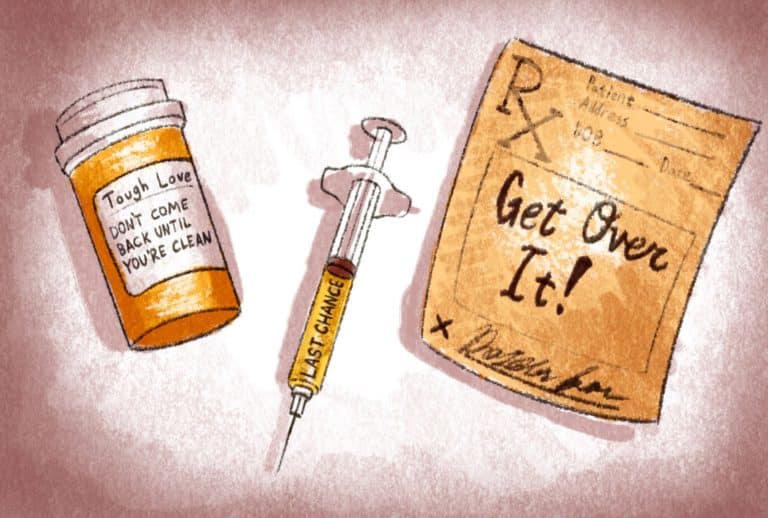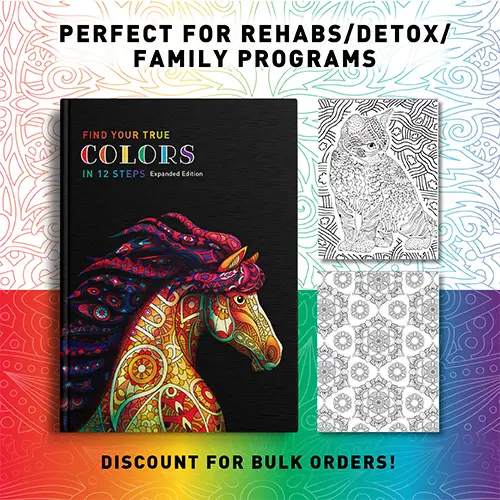“When was the last time you used?”
I stared at the intake counselor for a minute, taking in the room, taking in the fact that I was about to enter rehab, again.
“Friday night. Wait, no, I guess the middle of the night or early morning Saturday,” I answered.
“In the past week, what drugs have you taken?”
“Heroin, crack, Norco, Xanax, Flexeril.”
“In the past thirty days, how often did you use each of these substances?”
“How often? I mean, all the time. Constantly. Or not the pills, that was really just the last week or few days. But with heroin and crack—pretty much twenty-four hours a day.”
This wasn’t my first trip to rehab. It was one of countless relapses during 15 years of struggling with addiction, an addiction that began when I was only 13 years old. I hid my addiction for a decade because I didn’t “look like a drug addict.” In school, I got straight As, had lots of friends, was a cheerleader, a volleyball player, an equestrian. Later, I held jobs, had relationships, worked toward goals, all the while hiding a secret that was killing me.
I got caught at 23 and went to rehab for the first time, after ten years of hiding, and things got much worse. I started a seemingly never-ending cycle of relapse and recovery. In the three years between my first trip to rehab and my second, my parents and friends grew accustomed to me failing.
It was 2001, and the go-to strategy promoted in rehabs and recovery communities for the loved ones of those in the throes of addiction was still tough love. One drug counselor told my mom that tough love was the only way to save my life. Friends cut me out of their lives. And I get it. I get the impetus. It feels like boundary-setting.
But tough love doesn’t work.
In the 48 hours leading up to sitting in that office, answering those questions, I’d never felt lower. It had arguably been the worst relapse of my life, and I thought I had two choices: reach out for help or kill myself. Most people in my life weren’t speaking to me. I’d been stealing from my parents. I’d been cut off financially. Most of my friends had stopped calling.
When I reached out for help, I went to my ex-boyfriend, the only person I’d been honest with about my relapse. I reached out to him because, although he did have boundaries (“I won’t give you money for drugs again.”), he hadn’t practiced “tough love” with me. He always picked up the phone. He treated me like someone worth saving. He saw who I was underneath the drugs and lies and broken promises. His compassion for me cracked the door open to self-compassion.
He saved my life.
After that trip to rehab, it took me another two years of cycling through relapses to find my footing in real recovery. But I finally did. I’ve been drug-free for 17 years. Longer than the 15 years of using. In my early years of recovery, in some ways, I bought into tough love, too, when dealing with others struggling with addiction. That’s healthy, right? Setting boundaries. Not letting people manipulate you. But now, I have the gift of clarity, with time, with distance. I was wrong. They were wrong. We were wrong.
On average, 130 Americans die every day from an opioid overdose. An estimated 20 million people are struggling with a substance use disorder in this country. It’s important to understand that addiction starts long before the first drug is ever taken. Drug addiction is not a moral failing; it’s a public health issue. People with addiction disorders are human beings struggling with a human condition. Ostracizing people who likely already feel damaged, unlovable, stigmatized does nothing to solve what is, almost invariably, at the core of addiction—emotional pain and trauma.
These earlier models of tough love keep those struggling locked in a cycle of shame. And that shame becomes a gatekeeper that prevents people from reaching out for help. That shame kills people. It nearly killed me.
Personal boundaries are healthy and essential for everyone. What does that look like when you have someone in your life struggling with addiction? Drugs aren’t allowed in my house. You can’t drive my car. I am not participating in illegal activity with you. I’m not covering up for you. If you are violent, physically or verbally, I will remove myself.
We can still set personal boundaries with those in active addiction without casting them out, lessening their probability of ever getting help. How do we do so? By picking up the phone. By extending help where we can, when they reach out for help. By pointing them in the direction of harm reduction services so they don’t die. By having a meal together and reminding them you will be there, when and if they are ready for help. By showing them love, showing them they deserve shelter, food, employment, friendship, happiness, that their addiction has not stripped them of their humanity. By keeping pathways back to the community open.
By meeting people where they are at.
We meet people where they’re at through harm reduction services—needle exchange programs, Fentanyl testing strips, opioid maintenance and medication-assisted treatment (MAT), HIV and Hepatitis C testing and treatment, safe injection sites, Narcan training and distribution, access to non-abstinence based housing, and mental health support. Turning away from punitive models, the harm reduction approach eases the stigma attached to addiction, allowing those with substance use disorders to stay within the framework of society. This greatly improves the odds that they will stay alive and have the opportunity to recover.
When I was using heroin intravenously, I accessed a needle exchange program. That needle exchange program is the reason I avoided contracting Hepatitis C. The people who ran that program treated me with respect, treated me like a human being. There was no judgment. Years later, working as a case manager with homeless youth, I saw firsthand how harm reduction services opened the door to treatment options.
In those 15 years of struggling with addiction, I didn’t believe I’d ever get out. I didn’t think I could let go of the shame. I felt incapable of telling the truth. I thought I was a monster. I was sure I’d meet my end in overdose or by suicide. But here I am.
I wrote a book about my experience with heroin addiction and how I made it out, intending to open up the conversation around addiction and how we perceive it. It has become my life’s work to speak openly about addiction in the interest of destigmatization. My greatest hope is that we continue moving both public policy and our personal approach away from being “tough on addiction” and toward treating this very human problem with compassion and empathy.
This content was originally published here.





















